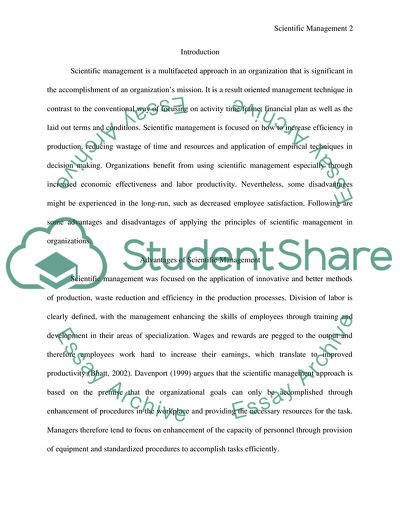Cite this document
(The Advantages and Disadvantages of Scientific Management Essay Example | Topics and Well Written Essays - 1250 words, n.d.)
The Advantages and Disadvantages of Scientific Management Essay Example | Topics and Well Written Essays - 1250 words. https://studentshare.org/social-science/1767527-scientific-management
The Advantages and Disadvantages of Scientific Management Essay Example | Topics and Well Written Essays - 1250 words. https://studentshare.org/social-science/1767527-scientific-management
(The Advantages and Disadvantages of Scientific Management Essay Example | Topics and Well Written Essays - 1250 Words)
The Advantages and Disadvantages of Scientific Management Essay Example | Topics and Well Written Essays - 1250 Words. https://studentshare.org/social-science/1767527-scientific-management.
The Advantages and Disadvantages of Scientific Management Essay Example | Topics and Well Written Essays - 1250 Words. https://studentshare.org/social-science/1767527-scientific-management.
“The Advantages and Disadvantages of Scientific Management Essay Example | Topics and Well Written Essays - 1250 Words”. https://studentshare.org/social-science/1767527-scientific-management.


